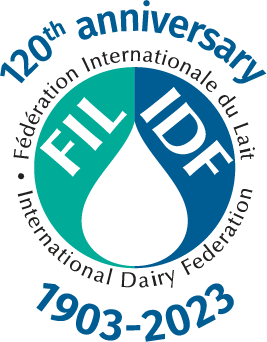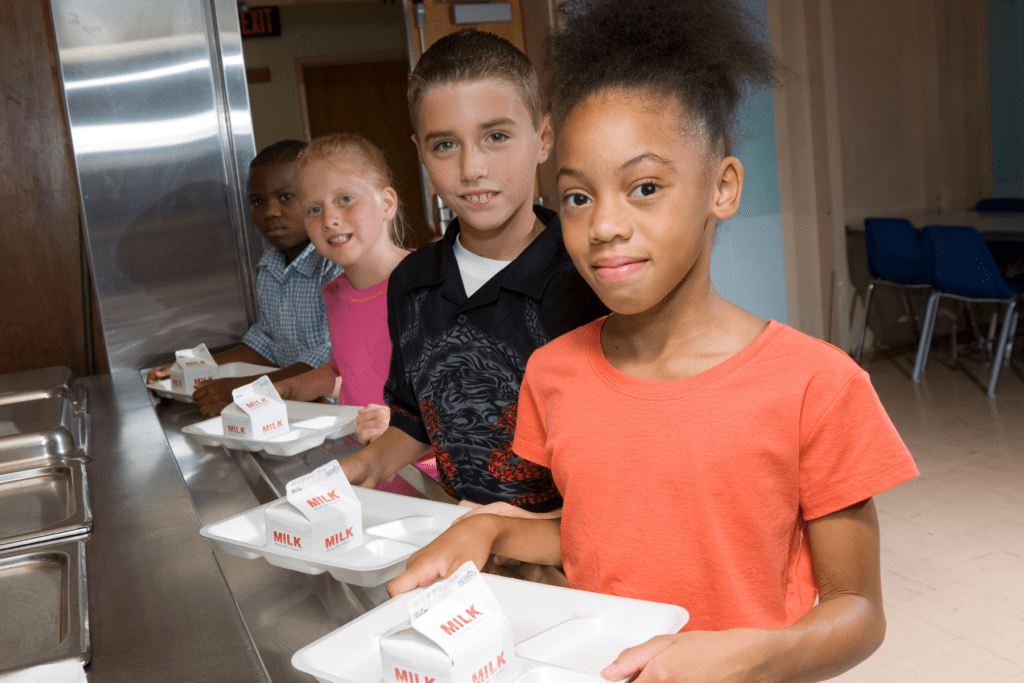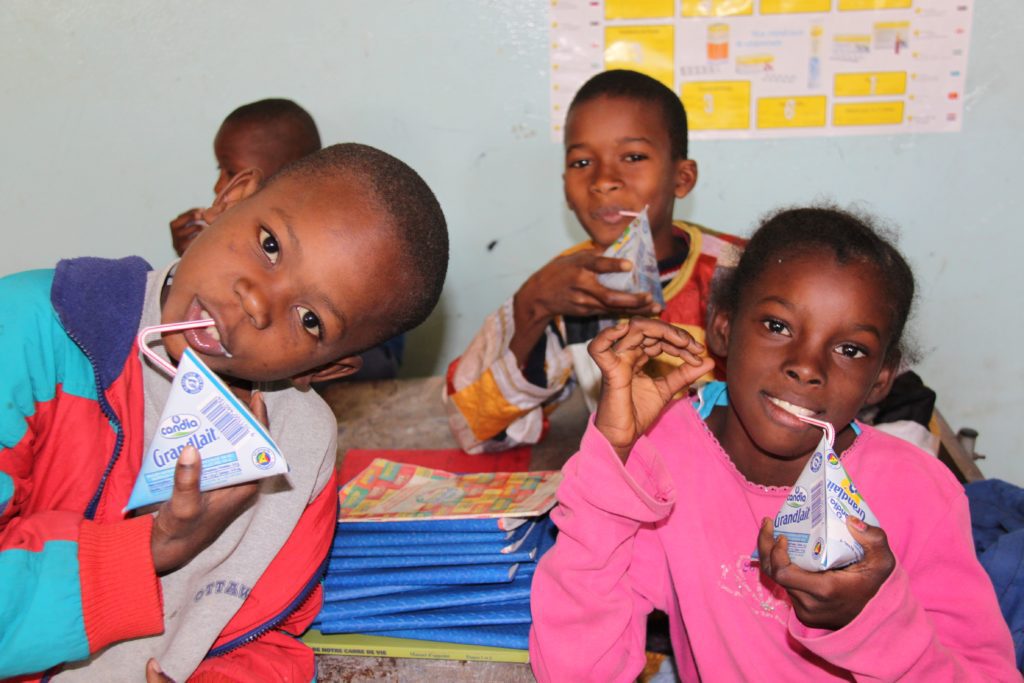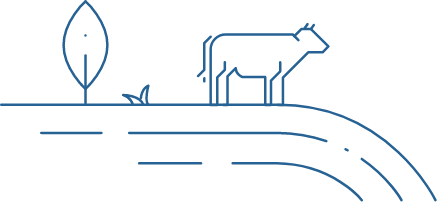

School milk programmes around the world contribute to good health and nutrition for children in schools. As part of our school milk series, Daniela Carrera, Team Manager for School Programmes in Switzerland at Swissmilk, provides an overview of how school milk programmes are handled in Switzerland and the benefits they offer to both students and teachers.
To counteract this and raise awareness of the value of school milk, Swissmilk has undertaken a range of activities to ensure that the subject of milk and nutrition is covered in the classroom and offers a wide range of teaching materials to this end. In addition, once a year, Swissmilk organises the break-time milk day in collaboration with the swiss countrywomen. Annually, about 325,000 pupils receive a cup of milk during the break, around 40% of all schoolchildren in Switzerland.
A history of school milk in Switzerland – then and now
Looking back, from the very beginning of primary schools, schoolchildren in Switzerland were provided with additional food at school for social and/or health reasons. During the First World War, meals for pupils became an established custom, especially in towns. During the 10 o’clock break, there was milk and bread, sometimes fruit and bread or dried fruit, milk, and bread. However, children in the countryside only received a full lunch if they had a particularly long journey to school.
Break-time milk during the Second World War
During World War II, children and teenagers in towns received 600 to 700 ml of milk per day, and up to one litre in the countryside. This measure was recommended by the Swiss Federal Commission for Wartime Nutrition (EKKE), to meet the need for calories and prevent rickets, caused by lack of vitamin D. Milk was only rationed from November 1942 onwards. The food situation deteriorated significantly due to rationing and price increases, so school meals became more important. Now, however, bread and milk were only available in return for coupons. In the winter of 44/45, the food situation became precarious and rations were insufficient: the school milk campaign declined because pupils had no more coupons to give. The EKKE lobbied for coupon-free school food, and its request was granted in summer 1945: break-time milk was once again provided without coupons.
The post-war years
After the war, the food situation improved rapidly. Nevertheless, the EKKE, the Doctors‘ Society of the Canton of Berne, the Swiss Medical-Biological Society and the Swiss Association of Physiologists and Pharmacologists called for a general introduction of free school food as ‘healthy post-war nourishment’. They justified their demand on medical grounds: ”The consequences of inappropriate nourishment are serious and often affect people’s entire lives. The diet of pupils is particularly inadequate during school time”1
The 50’s, 60’s, and 70’s
Break-time milk was the responsibility of the communes, cantons, and schools: it was up to them to provide the break-time milk punctually, or not at all. The regions of Basel, Berne, and Zurich were especially active in this regard.
During this period, the Central Association of Swiss Milk Producers (ZVSM) did nothing concerning break-time milk. Nevertheless, there were two political initiatives, a motion in Berne and another in Zurich, for a nationwide introduction of the milk break, but neither was adopted.
With the help of the break-time milk, school dentists then took up the fight against tooth decay. After becoming commonplace in schools, elevenses with too much sugar and too few nutrients were recognised as a problem. In 1955, fluorine was even added to school milk in primary schools in the city of Winterthur to improve pupils’ dental health. The addition of fluorine came before pasteurisation in the premises of the Winterthur Dairy Association. However, the fluorine addition had no future and was soon discontinued.
The 80’s: The Break-time Milk Foundation
Break-time milk played an increasingly smaller role in the nourishment of schoolchildren. In 1984, the Swiss Milk Producers SMP (at that time the Central Association of Swiss Milk Producers ZVSM) created the Break-time Milk Foundation. Its goal: “Promote natural and balanced snacks by providing milk (break-time milk) and fresh dairy products in schools and workplaces and thus avoid the formation of unhealthy habits”. Two school milk consultants visited the schools and informed teachers about the health benefits of break-time milk. Even though the Foundation provided refrigerators, milk automata, and beakers for break-time milk counters, milk was served in ever fewer schools.
The 90’s: less and less break-time milk
In 1991, a survey of schools in the Canton of Berne showed sobering results: only about 20% of all schools in the canton served break-time milk daily, and most only sporadically. The Foundation set new priorities: costly consulting services were discontinued and instead the Foundation started distributing brochures and teaching aids on healthy nutrition with milk and dairy products. In the 90s, the Foundation built up a sizeable range of brochures, films, and games. Beakers and beaker racks were, however, supplied to interested schools as before.
New directions for a new millennium: “Break-time Milk Day”
At the beginning of the new millennium, only a few schools continued to distribute break-time milk. Overwhelmed and sometimes overloaded with new additional duties, schools passed the responsibility for schoolchildren’s diets to parents. Although schools value milk as a nutritious food, they are unwilling to carry the expense of milk-dispensing facilities.
In order to stress the important role of milk in the nutrition of children, a balanced mix of information, teaching aids, and opportunities, is used to raise awareness among teachers and parents. Milk-dispensing facilities and targeted voucher-based support are used by the Foundation to generate interest. In 2001, “Break-time Milk Day” was launched. The growing debate on overweight children and unhealthy break-time snacks has raised awareness of the value of break-time milk, a healthy option, among parents and teaching staff. The success of “Break-time Milk Day”, on which most recently over 340,000 schoolchildren (almost 40% of all children of school age in Switzerland) received a beaker of milk, shows that the diet of schoolchildren has gained new significance.
The objectives of Break-time Milk Day in Switzerland
Break-time Milk Day has two components: knowledge transfer and product use. It appeals to teachers, children, and parents alike, and transmits the essence of milk’s health benefits for schoolchildren.
It focuses on:
- Milk-dispensing facilities to allow schoolchildren to drink milk and see how good it tastes.
- Demonstrating alternatives to soft drinks in schools.
- Raising awareness among teachers and parents of milk’s benefits for a healthy diet.
- Informing not only schoolchildren but also teachers and parents that a healthy diet includes three servings of milk and dairy products per day.
- Provide teaching staff with informative materials on break-time milk and healthy break refreshments.
Educational offerings
In addition to milk counters, for decades, Swiss milk has offered a many-faceted educational package on the topics of milk/milk productions, nutrition, cooking practice, and dairy cows. Interested teaching staff can find it at www.swissmilk.ch/schule (German), http://www.swissmilk.ch/ecole (French), and www.swissmilk.ch/scuola (Italian).
The teaching material appeals to teachers and is consistently rated as high quality and very useful. Swiss milk uses the “Schule” newsletter to inform teaching staff 4-6 times a year about new educational offerings as well as news on milk and agriculture.
For parents’ evenings, brochures and posters on healthy snacks during breaks are popular. For all class levels, Swissmilk offers nutrition workshops run by qualified nutritionists. Due to the coronavirus, these workshops have been temporarily suspended.
- Food Check for young people (German)and (French)
- From grass to glass (German)and (French)
- Suisse Quiz (German)and (French)
- Interactive worksheets for all levels)and (French)
Project week “From Stable to Table”
To mark the 20th anniversary of the break-time milk day, in late September the project week “From Stable to Table” (“Frisch Auf den Tisch”) will be launched on www.swissmilk.ch/schule (German), www.swissmilk.ch/ecole (French), and www.swissmilk.ch/scuola (Italian). The focus will be on milk and dairy products. Schoolchildren will get to know the path of agricultural products, from sowing to harvesting, and learn exciting things about the production.
The project week “From Stable to Table” can be run independently of the break-time milk day, at a different point in time. Teaching materials and aids can be used as a module, for individual lessons, workshop instruction, or field trips.
Classes are invited to participate in the competition “Less is more!” during the project week and submit ideas on combating food waste.
1 Fleisch Alfred: Ernährungsprobleme in Mangelzeiten: Die schweizerische Kriegsernährung 1939 –1946. Basel, 1947, S. 491
Read more about the value of milk in schools
Compiling research from global experts in the field on different programmes around the world, IDF bulletin ‘The contribution of school milk programmes to the nutrition of children worldwide’ provides insights on the range of products, along with raw data and a literature review.
Available to download now, the 2020 edition includes a review on the evidence of the nutritional benefits of these programmes, offering new perspectives into the global impact of school milk programmes.











